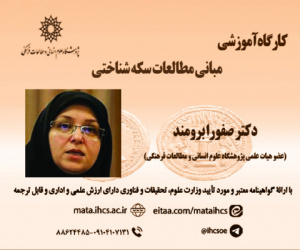برآورد توابع واکنش مالی و عوامل تعیین کننده پایداری مالی در ایران با استفاده از توابع خطی و غیرخطی (مقاله علمی وزارت علوم)
درجه علمی: نشریه علمی (وزارت علوم)
آرشیو
چکیده
دولت ها با استفاده از ابزار سیاست مالی، اهداف اقتصاد کلان مانند تثبیت اقتصاد را دنبال می نمایند. از طرفی، پایداری مالی، لازمه رسیدن به ثبات اقتصادی می باشد. این پژوهش، با استفاده از توابع واکنش مالی خطی و غیرخطی شامل توابع درجه دوم و درجه سوم، تابع با پارامتر متغیر در زمان و الگوی تغییر رژیم مالی مارکوف-سوئیچینگ، پایداری مالی دولت ایران و عوامل تعیین کننده آن در دوره 1349-1400 را مورد سنجش قرار می دهد. بر اساس یافته های این پژوهش، ضریب نسبت بدهی دولت به تولید ناخالص داخلی در الگوهای خطی و غیرخطی، منفی و غیرمعنی دار ولی در الگوی شامل متغیرهای کنترل، منفی و قویاً معنی دار است. نتایج الگوی تغییر رژیم مالی مارکوف-سوئیچینگ وجود دو رژیم مالی در سیاست مالی ایران را نشان می دهد. یک رژیم مالی ناپایدار، که در آن، واکنش تراز اصلی بودجه نسبت به بدهی عمومی، منفی و معنی دار است و یک رژیم مالی پایدار که در آن، واکنش تراز اصلی بودجه نسبت به بدهی عمومی، مثبت ولی غیرمعنی دار می باشد. همچنین، نتایج الگوی تغییر رژیم مالی مارکوف-سوئیچینگ نشان میدهد میانگین احتمالات انتقال فیلترشده و هموارشده ماندن در رژیم مالی ناپایدار بیشتر از رژیم مالی پایدار است که بیانگر آن است که سیاست مالی ایران ناپایدار بوده است. بر اساس نتایج الگوی با پارامتر متغیر در زمان، واکنش تراز اصلی بودجه نسبت به افزایش بدهی در طول زمان منفی و کاهشی بوده است، بنابراین، کاهش بدهی در اولویت دولتها در ایران نبوده است، درنتیجه، سیاست مالی ایران در جهت ناپایداری حرکت کرده است.Estimation of Fiscal Reaction Functions and Determinants of Fiscal Sustainability in Iran Employing Linear and Nonlinear Functions
Governments pursue macroeconomic objectives such as stabilizing the economy by employing fiscal policy tools. However, fiscal sustainability is obligatory for achieving economic stability. This research, utilizing linear and nonlinear fiscal reaction functions, including quadratic and cubic, time-varying parameter and Markov-switching fiscal regime change functions, measures the fiscal sustainability of the Iranian government and its determinants in the period 1970-2021. Based on the findings of this research, the government debt-to-GDP ratio in linear and nonlinear models is negative and insignificant, but in the model with control variables, it is negative and strongly significant. Hence, the model with control variables results in the unsustainability of Iran's fiscal policy. The results of Markov-switching fiscal regime change model reveals the existence of two fiscal regimes in Iran's fiscal policy. An unsustainable fiscal regime, in which the reaction of the primary budget balance to the public debt is negative and significant, and a sustainable fiscal regime in which the reaction of the primary budget balance to the public debt is positive but insignificant. Also, the results of the Markov-switching fiscal regime change model demonstrates that the average filtered and smoothed transmission probabilities of remaining in unsustainable fiscal regime is higher than that of sustainable fiscal regime, which indicates that Iran's fiscal policy has been unsustainable. Based on the results of the time-varying parameter model, the reaction of the primary budget balance to the debt expansion has been negative and diminishing, therefore, debt reduction has not been the priority of governments in Iran, and as a result, Iran's fiscal policy has been proceeding in the unsustainable direction.







